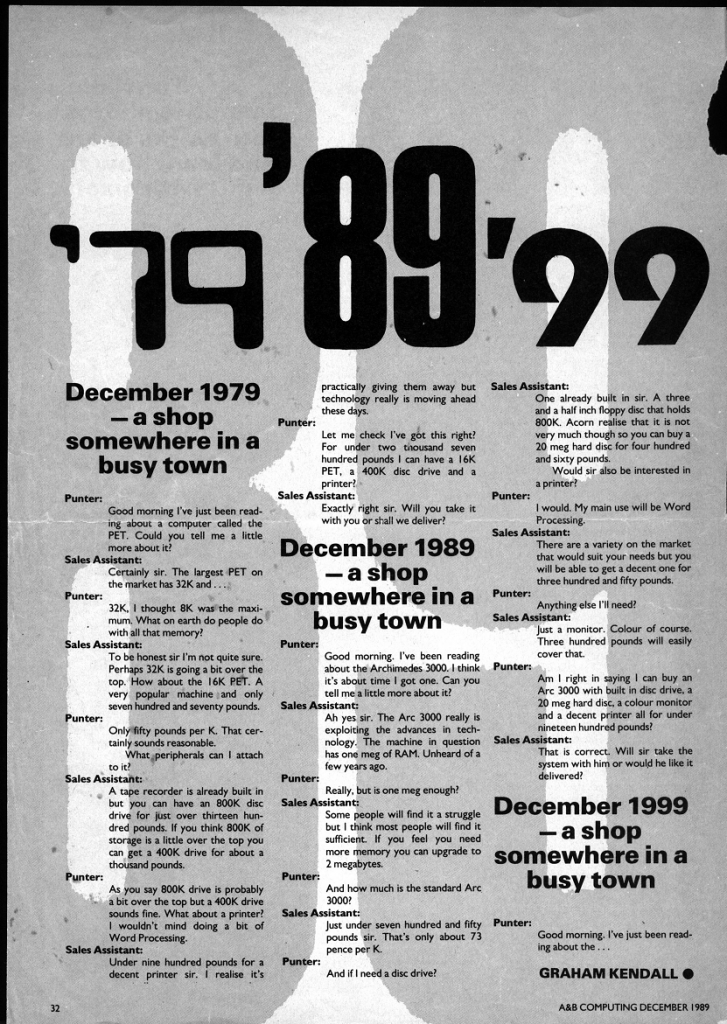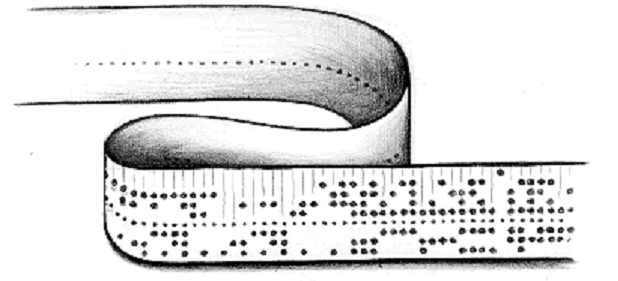John Nottage
I’ve had this cutting from an old computer mag since I pulled it out in 1989. I was a PET owner before I moved to Acorn computers. Read and enjoy.
(Click on the picture below to see larger version:
use your Browser’s BACK button to return to this page)
Nick Ware
My first computer was an Amstrad 1512 with a green CRT monitor, a 5.25inch (yes) 20 megabyte HDD that sounded like a spin dryer, and a dot pin matrix printer that walked across the desk when it was printing.
John Nottage
Luxury. Unashamed luxury! My first computer was a KIM 1 with (if I remember correctly) a hex keyboard, 4 seven-segment displays and 250 bytes of RAM expanded to a mind-blowing 1k, all on a single circuit board! Eventually someone sold me an old home-made teletext decoder that had been converted to a video display unit – a huge box the size of an old VHS recorder with loads of chips in it – and I was able to get a video display on an old black and white TV and attach a proper qwerty keyboard. Those were the pioneering days…
Bernard Newnham
Ohhhh we used to DREAM of having a KIM1! Woulda’ been gold to us!
In the mid-nineteen seventies, in an effort to be university educated so that I might get into Pres, I took an OU course. One of the half modules was on computing, and to do that I had to go to the Luton College of Further Education.
In a small room was a teletype and a phone with a big rubber cradle. Having written your program at home, you typed it in, and the machine would make holes in a strip of punched tape.
When you were finished you dialled a number which was the OU time sharing mainframe in MK. Once you heard the buzzing you put the phone on the rubber cradle and the teletype would talk to the computer at 2600 baud. Then you’d press the go button on the punched tape and it would whiz through and upload your program. Then you’d type run and see if it worked.
But you try and tell the young people today that… and they won’t believe ya’.
Alec Bray
At college – following my time as a Tech Op – we had to do Algol as part of the Mathematics course. The programs had to be typed into a teletype machine which produced the punched tape. This then had to be sent – by the only mail system then in place, that is the Post Office – to the University of Liverpool computing department. The paper tape instructions were then punched onto punched cards, the stack of punched cards representing the program then held in the batch queue. The results of the program were posted back to us students. So, some four weeks after writing the program, you got the results back – “Stack Overflow”. So, do it all again, trying to work out what had gone wrong.
Mike Jordan
When we looked after the Teleprinter switchboard in BH, that of course also used punched tape for storage and linear paper printed tape for the operators to read the messages.
Alasdair Lawrance
I remember the same palaver when I did my OU degree, but not with punched tape. The mainframe was a DEC 20 (Digital Equipment Corporation?) as I recall, and you had to book time (30 mins max) from a broom cupboard in Pimlico School. It must’ve been a bit later, as there was a monitor and keyboard. Can’t remember what we were supposed to do, though, and we all thought it would never catch on.
When ILEA was up and running, it would run Five channels on 2”VTs using punched tape. The idea was for schools to time shift using the Sony half-inch machines, but the GPO network wouldn’t cope with colour so we went to VHS duplication, and cassettes were sent out on the internal post system.





